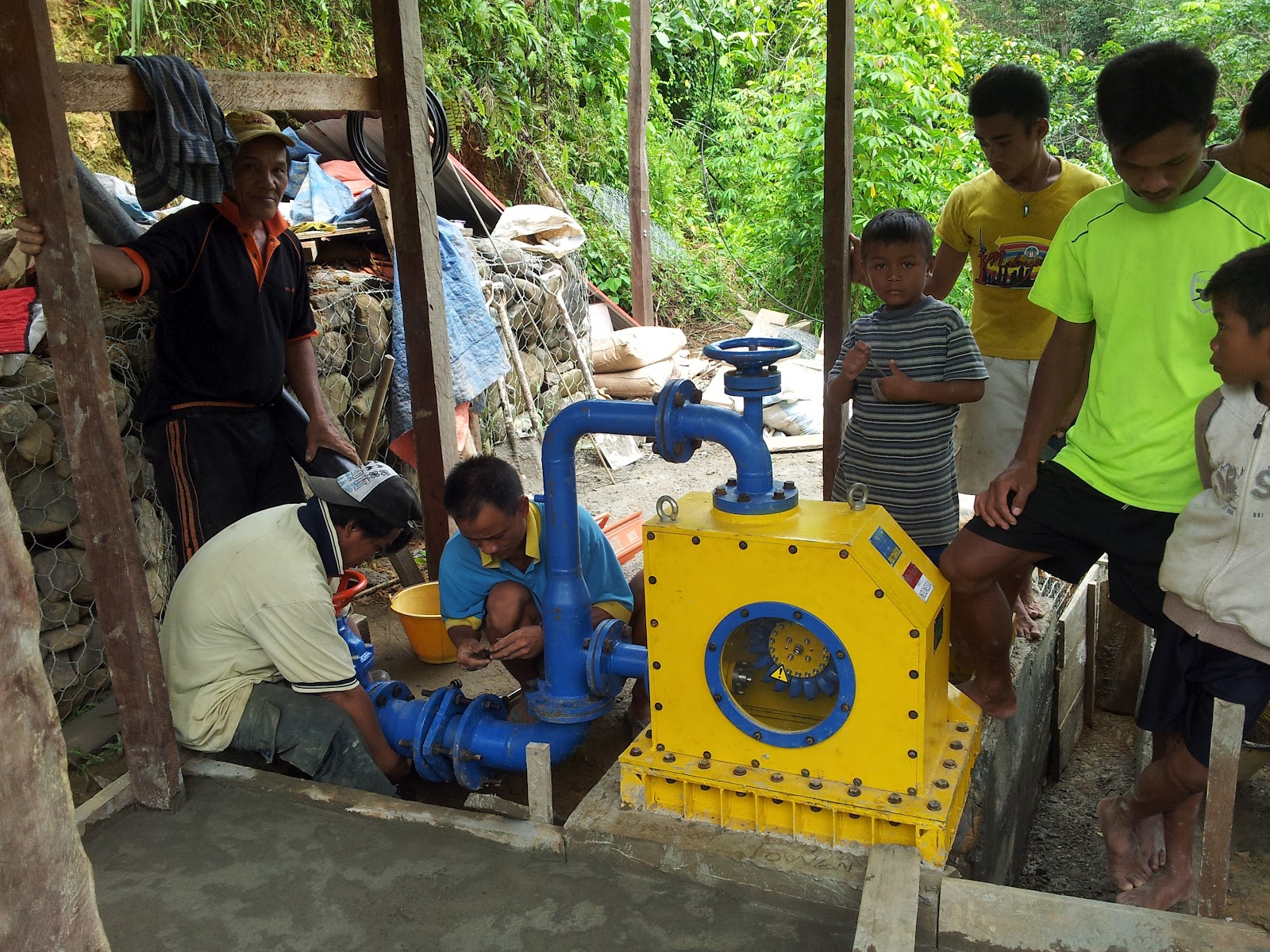FROM laptops, smart phones to digital cameras, middle class youth in the Klang Valley these days usually own a few electronic gadgets. It is taken for granted that there will be 24-hour electricity supply to power these devices. But in a remote Penan village in Upper Baram, Sarawak, 1Malaysia laptops given by the government to students have been left idle due to a lack of power supply in the settlement.

Hollie Tu, a community organiser with Koperasi Pelancongan Penan Selungo Baram Berhad, says it demonstrates how the Malaysian government is out of touch with the living reality of rural students. “What’s the use of having a laptop when you don’t have electricity?” Tu said in exasperation when met at the Rainforest Discovery Centre at Sepilok, Sabah on 31 Oct 2012.
What’s the use, indeed? Who else is suffering from a lack of electricity in rapidly developing Malaysia and what can the government do about it?
No electricity in Ampang…

It’s not just the Penan in Sarawak’s interiors that don’t have electricity. Official 2010 statistics show that more than one third of Orang Asli villages in Peninsular Malaysia are still without electricity supply, said Dr Colin Nicholas from the Centre for Orang Asli Concerns. Villagers often make do with kerosene lamps or candles at night. Only those better off can afford generators.
One classic case is Kampung Orang Asli Kemensah, which sits among affluent neighbourhoods in Ampang but still has no power supply till this day. Despite having their plight highlighted in newspapers since 2007, Nicholas said national utility company Tenaga Nasional Bhd just started pulling in the wires to connect the indigenous village to the grid a few months ago.
If an indigenous village located less than 30-minutes drive from our capital can be so conveniently forgotten from “development”, what will the government do for villages far in the interior?
Nicholas said the government tried to install solar panels in remote Orang Asli villages but most of these solar electrification projects failed due to poor maintenance. He pointed out that the panels and batteries require a lot of maintenance and the government did not teach the communities to maintain them.
“The government had also spent millions to install water filtration systems [to provide clean water] to villages but most couldn’t work because there is no electricity to power the pump,” said the academic-activist, speaking at the first Southeast Asia Renewable Energy People’s Assembly, a gathering of community-based renewable energy system producers across the region.
…and in Sabah
Over in Sabah, although nearly 80% of its population has 24-hour electricity supply, in its poorest district of Pensiangan, three quarters of the population have no electricity.
Adrian Lasimbang is one of the key figures helping the off-grid communities set up their own small-scale hydro systems. The trained engineer from Sabah set up Tonibung (Friends of Village Development) in 1991 which helps rural indigenous communities produce their own electricity. Tonibung installed the first pico-hydro for an indigenous village in 1999. (Pico-hydro produces less than 5kW of power while micro-hydro can generate between 5kW to 100kW of electricity.)
“Only 10% of our work involves engineering. The bulk of our time is spent getting the locals involved before the start of the project and training them to sustain the hydro system post-project,” said Lasimbang.
His organisation has helped install 15 pico- or micro-hydro systems in his home state, Sarawak and, over the past few years, in Peninsular Malaysia as well. Lasimbang noted that such small-scale hydro schemes’ impact on the environment is minimal compared to mega dams.

However, Tonibung and the local communities have had to rely on foreign aid and corporations to fund their projects as they have found it difficult to source for local funding. It is disappointing that our government doesn’t seem interested in financing these small-scale and affordable renewable energy projects which provide a basic need to rural communities.
Democratising energy production
Instead, the Malaysian government tends to favour large-scale, centralised energy production projects. From the Bakun dam and the 12 proposed mega dams in Sarawak to the scrapped Sabah coal plant, local environmentalists have their fair share of controversial mega projects to protest against.
No doubt it is more energy- and cost-efficient to centralise power supply when electrifying urban areas where populations are concentrated. But the same power distribution model becomes inefficient and costly when applied to rural populations where communities are spread out. That’s why many indigenous communities in Malaysia remain off-the-grid.
 Clearly, our government urgently needs to develop a decentralised energy production strategy for its off-grid communities. Unfortunately, the Renewable Energy Act 2011 does not provide any support for the deployment of small-scale energy projects in these communities. The legislation favours urban consumers and existing corporate power producers.
Clearly, our government urgently needs to develop a decentralised energy production strategy for its off-grid communities. Unfortunately, the Renewable Energy Act 2011 does not provide any support for the deployment of small-scale energy projects in these communities. The legislation favours urban consumers and existing corporate power producers.
Power is a basic amenity, not a luxury, for our off-grid communities, and should be treated as such. Often poverty-stricken, these communities need and deserve more government aid to secure energy and clean water supply to achieve a better quality of life. Instead of free laptops and one-off handouts, the government should instead focus on long-term benefits such as ensuring that all Malaysians receive the basic need of electricity. ![]()
Gan Pei Ling thinks the budget allocated for smart phone rebate in 2013 should instead be used to fund small-scale renewable energy projects in off-grid villages. Certainly urban youths can learn to live without smart phones while some of their counterparts are having to make do with kerosene lamps.
[related-posts]


JW Tan says
It’s not just the smartphone rebate. Regrettably the Malaysian government has a habit of wasting billions of ringgit on vanity megaprojects of little or dubious benefit to the country. How much did we waste on sending a space tourist to the International Space Station? How many communities could we hook up to the grid for that amount of money?
The true measure of development is not the ability to book a seat on a Russian rocket, or pay foreign firms to build a very tall building. It’s having a miniscule poverty rate, having 100% literacy, making sure all schools and communities have electricity and internet connections, reducing corruption etc – all the things that require hard-grinding effort and have little glory reflected. That’s why the politicians in power can’t achieve these.
hclau says
JW,
It is the same mindset that allows for the building of brand new schools, which are then left idle and abandoned. Corruption!
BTW, TNB built more than 20 micro and Pico hydro dams in the past, but most of them fell into disrepair due to poor maintenance. It is always the same story. The officers are more interested in getting a budget (read: some quick money) with the programme rather than actually solving a problem.
Don’t ask me how this issue can be fixed, because I don’t know!
Kong Kek Kuat says
@ hclau
Are you talking about LLN (Lembaga Letrik Negara) or TNB? Why would the government allocate a budget for TNB? I think it is unlikely to be TNB because they have a very high gearing-ratio for a company of that size. I don´t think even the Malaysian government can absorb long-term debt defaults from TNB.
hclau says
TNB – It is one of their community energy programmes designed to supply power for “isolated” communities. I believe it was supposed to be one of their obligations as a GLC.
I have the details, but you can get them from TNB if you wish to and try hard enough. They started a programme to try and re-vitalise some of these hydro systems beginning in 2010, but I have not bothered to keep track.
Cham says
Salutations to all,
I concur that we need energy to power our electronic devices and much more. I envisioned using the Light Emitting Diode (LED) as a light source almost 30 years ago. When the white LED was introduced, one person used it to give the gift of light to off-grid communities around the world. I am very sure that we have the resources to help those living in off-grid communities in Malaysia.
We can start by giving, a gift of light as a simple gesture to these off-grid communities and teach them how to maintain these resources. We can proceed to do more and more as our resources grow in the future.
Gopal Raj Kumar says
Which Malaysians?
Bad Rabbit says
I don’t know Gopal Raj Kumar, but I’d guess at ALL Malaysians…I think that would be fair.
Wouldn’t you?
Gopal Raj Kumar says
No, you are quite wrong and terribly presumptuous to conclude firstly that you “don’t know”, then add “All Malaysians” to end the answer.
Generalisations of this sort make these assumptions in the article in question more incredulous and less credible.
JW Tan says
Did you miss the double entendre in the title then?
Gopal Raj Kumar says
Oh is that what it is now? a figure of speech. Why not get your grammar corrected first?
JW Tan says
Nothing wrong with my grammar.
In answer to your question which Malaysians, why, the Malaysians who don’t have electricity, and who are literally living in the dark, and also those Malaysians (including, it would seem, most BN politicians) who are ignorant of the fact that the first group of Malaysians exist, therefore ‘living in the dark’ figuratively.
It’s shameful that the first group even exists in the first place.
Bad Rabbit says
Oh no Gopal Raj Kumar, I wasn’t being presumptuous, I was deliberately winding you up. Why should you have all the fun?
gua says
If these were Malay kampongs, I believe the electricity supply would be there much much quicker.
How many Malay kampungs are there without electricity?